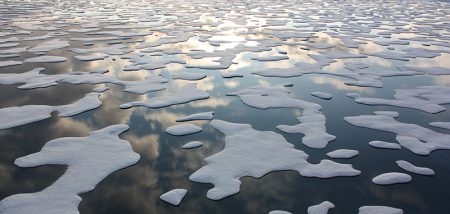Dr. Dave Janda Interviews Dane Wigington – 10/2/16

Source: Dr. Dave Janda Dane Wigington Geo-Engineering Expert, Global Climate Engineer (GeoengineeringWatch.org) Sunday, October 2, 2016
As Arctic Ocean Ice Disappears, The Global Climate Impacts Intensify

Source: Yale – Environment 360 The top of the world is turning from white to blue in summer as the ice that has long covered the north polar seas melts away. This monumental change is triggering a cascade of effects that will amplify global warming and could destabilize the global climate system. BY PETER WADHAMS The news last week that summer ice covering the Arctic Ocean was tied for the second-lowest extent on record is a sobering reminder that the planet is swiftly heading toward a largely ice-free Arctic in the warmer months, possibly as early as 2020. After that, we can expect the ice-free period in the Arctic basin to expand to three to four months a year, and eventually to five months or more. Since my days measuring the thickness of Arctic Ocean ice from British nuclear submarines in the early 1970s, I have witnessed a stunning decline in the sea ice covering the northern polar regions — a more than 50 percent drop in extent in summer, and an even steeper reduction in ice volume. Just a few decades ago, ice 10 to 12 feet thick covered the North Pole, with sub-surface ice ridges in some parts of the Arctic extending down to 150 feet. Now, that ice is long gone, while the total volume of Arctic sea ice in late summer has declined, according to two estimates, by 75 percent in half a century. The great white cap that once covered the top of the world is now turning blue — a change that represents humanity’s most dramatic step in reshaping the face of our planet. And with the steady disappearance of the polar ice cover, we are losing a vast air conditioning system that has helped regulate and stabilize earth’s climate system for thousands of years.
